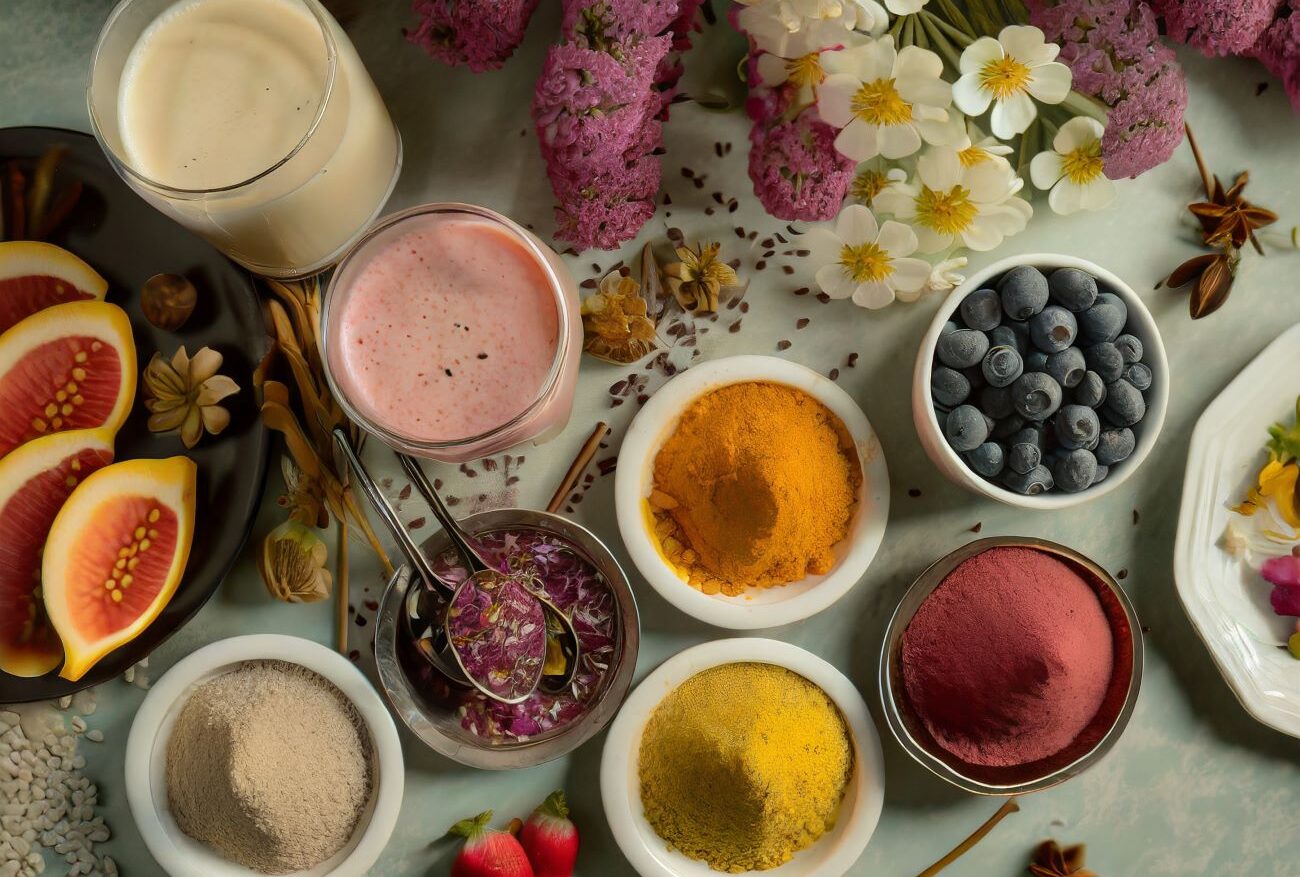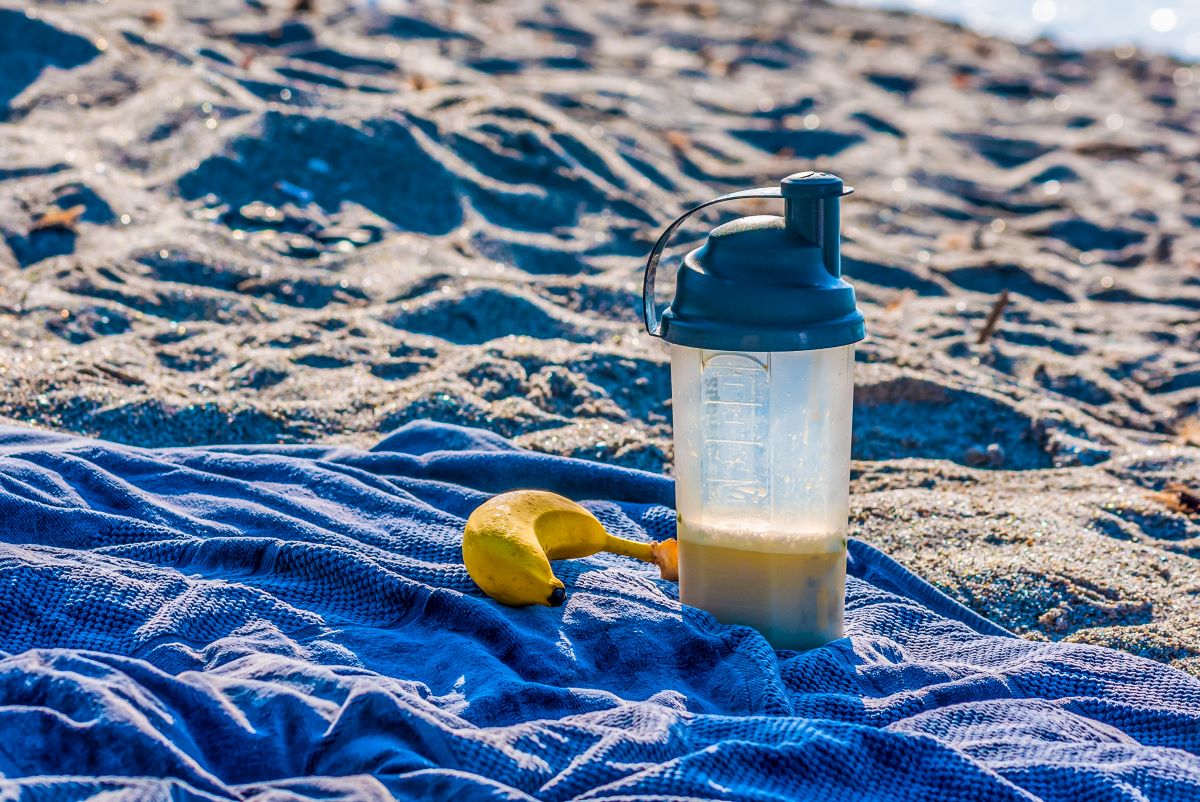Punxsutawney Phil did not see his shadow this year, which means to those who believe in the weather insight of a rodent, that spring is arriving early. For those who rely on the standard meteorological calendar, the first full day of spring this year was March 20th.
Regardless of when spring is sprung, people are already excited about the trend toward warmer temperatures and spring flavors are in the air. People are starting to head outdoors and seek out dietary supplements that will support their active lifestyles while tantalizing their taste buds; dietary supplement brands look ahead to summer and what will drive consumer tastes as the mercury continues to rise.
Tropical Storm of Flavors
Forecasting for the upcoming spring season, tropical flavors are poised to capture consumer interest.
Upon speaking with our Senior Formulator of Key Accounts, Kevin Kumetz, “while individual flavors like strawberry and peach may be considered commonplace when people are trying to satisfy their palates, the blending of multiple fruit sources—such as strawberry and kiwi, pineapple paired with peach and mango, and the intriguing mix of guava and starfruit—offers a refreshing departure from the ordinary, embodying the essence of spring flavors.”
According to Kevin, these flavorful combinations will not only elevate taste experiences but also help to drive sales in the months ahead.
At Vitaquest, we are developing supplements, ready-to-drink (RTD) mixes, and other nutritional products to respond to these flavor trends to help our clients succeed.
As you prepare to introduce new flavor solutions, you must work at least 12 weeks in advance.
To do that effectively, our flavor experts start research and development months in advance. They pour through market trend reports from flavor houses to see what flavors are trending in foods. Those flavors will then move to beverages and then onto powder supplements.
From there, our team’s innovation and creativity take over as we work to develop customized products that are truly unique.
Following this process keeps us two steps ahead of market trends – and that’s the time we need because as you prepare to introduce new flavor solutions, you must work at least 12 weeks in advance. That’s how long it takes to bring a product idea to market. So, the process of getting those tropical flavors onto store shelves this spring started back in November – and right now, we’re helping clients create new products for the summer months.
Exploring the Trend of Spring Flavors
With the changing of seasons, it’s not just clothing that changes; so do flavors and trends. So, what are the trending flavors of Spring and Summer for the dietary supplement industry? Let’s start with Spring flavors, a time when flowers bloom.
Not surprisingly, floral flavors are likewise popular in the Spring. According to Mordor Intelligence, the floral flavors market is projected to grow at a compounded annual growth rate (CAGR) of 5.1% over the next five years. Popular floral flavors that Kevin has been seeing lately include jasmine, rose, hibiscus, elderflower, lavender, orange blossom, and chrysanthemum. For the best result, he suggests pairing these floral flavors with fruit flavors to complement the sweet and tangy profiles of the fruits.
An example Kevin provides is citrus-hibiscus, although your imagination is the limit. And don’t forget mint, a classic flavor that provides a sense of coolness and refreshment. “If you want tartness, think of rhubarb which also provides a pleasing pink color. For something unique, consider cherry limeade popcorn or Funfetti jellybeans.”
Regarding Summer, surveys indicate that 49% of consumers would like to try flavors that are not typically associated with the product they use. An example would be the addition of basil to a hydration drink, turmeric to a protein powder, or rose to a coffee alternative.
Consumer surveys also show there is particular interest in savory and sweet flavors. The data indicates that 92% and 94% of consumers are interested in those two taste groups, respectively. Some examples of sweet flavors include maple, mango, rose, nutmeg, fig, apple, coconut, peppermint, and honey. Examples of savory flavors include black sesame, black/white tea, matcha tea, bacon, cardamom, black pepper, turmeric, chili pepper, lemongrass, and basil.
Consumer Preferences and Flavor Innovation
Consumer preferences drive the evolution of flavor trends in the dietary supplement industry, although today’s preferences are very different from long ago. For example, garum, an extremely pungent and popular fermented fish sauce, was introduced by the ancient Romans and was used as a condiment in cooking—but has since disappeared from the Western world. Likewise, spicy chutneys and pickles were popular in England during the 18th century.
Since the lockdowns of COVID-19, the “nostalgia factor” has resulted in consumers demanding comforting, nostalgic flavors from happier times. This might include flavors like maple pancake, or apple pie. However, time moves forward and there is a demand for more exotic flavors like jackfruit and yuzu.
Likewise, popular flavors gaining traction include sweet and savory blends. Examples Kevin has noticed include turmeric-infused honey milk, gingerbread, and cherry balsamic. Flavor and trend changes have also seen sweet and spicy flavor combinations trending in 2024, with spicy chocolate and spicy honey as prime examples. More sophisticated flavors are also entering the market, including lavender and chamomile, and exotic fruits like Prickly Pear.
Masking Off-Notes and Functionality
Off-notes sometimes occur in dietary supplements due to certain active ingredients or may even be due to certain flavor choices. Regarding the latter, too much brown sugar flavor can produce an astringent, medicinal taste. Mixed nuts flavor can produce a burnt off-note. But these examples are less frequent than off-notes caused by active ingredients.
Some ingredients have bitter notes. The best flavor choices to help mask bitterness include chocolate, citrus, and coffee. Sometimes vegan proteins impart characteristic off-notes from their plant sources. In these instances, good masking flavors include brown spice (e.g., cinnamon roll), berry, nutty (e.g., peanut butter), mint, and tropical fruit. Dairy and whey proteins may also impart a chalky taste quality. This can be countered with indulgent flavors (e.g., cake batter, cheesecake, truffle) and sweet brown flavors (caramel, coconut, butter cookie).
Vitamins and minerals also have distinct and sometimes undesirable tastes. The use of sour flavors and fruit flavors can be helpful in this instance. What about fishy tastes that come from marine source ingredients? Try citrus, coffee, caramel, and maple brown butter.
Botanical/herbal tastes aren’t always desirable, but you can compensate with dark berries, florals, and cocktail and tea-type flavors.
In addition, there are special flavor technologies, which include sweetness modifiers/enhancers, bitterness maskers/blockers, mouthfeel enhancers, protein maskers, and vitamin maskers.
Ultimately, you want to work with a contract manufacturer with a proven track record of masking off-notes.
A focus on Natural Flavors
The size of the Natural Flavors market was valued at $7.8 billion in 2022 and is anticipated to register a CAGR of over 5.5% by 2032. As consumers become more health-conscious and concerned about the ingredients in their food and supplements, there is a growing demand for natural flavors. In particular, the pandemic caused consumers to become more health-focused, leading to a demand for natural food and supplement options, including natural flavors. The most popular flavors are natural fruit flavors, accounting for 30.5% of the natural flavors for 2022. Such flavors included tropical fruits (e.g., mango) and classic fruits (e.g., strawberry and blueberry).
Likewise, consumers are more interested in natural sweeteners rather than their artificial counterparts. A market analysis by Mintel indicates that negative perceptions of artificial sweeteners present opportunities for natural sweetening agents like stevia and monk fruit—but not sugar. Although natural, excessive sugar intake is associated with a negative impact on health.
However, one established challenge with stevia is that its reb-A content has bitter afternotes. The good news is that stevia products focusing on its reb M content have a smoother, non-bitter taste which is a significant improvement over the reb A variety.
Vitaquest commits to using natural flavors and natural sweetening agents, which supports the clean label goals espoused by more and more brands today.
Beyond the Market Report
The factors behind these seasonal flavor trends are more personal than what you find in a typical marketing report, and what we currently observe driving the market is nostalgia. People want to return to their earlier years to experience the nostalgic flavors they had as kids.
One flavor that illustrates that is blue raspberry. It first became popular in the 1970s thanks to ICEE frozen beverages and Otter pops.1 Consumers are clamoring for that taste again, and we recently created a blue raspberry-flavored supplement that did extremely well for our client.
Beyond Tropical: A Look at Summer Flavor Surprises
Certainly, tropical blends such as strawberry kiwi have gained popularity in the Spring. As previously noted consumers would like to try savory and sweet flavors, such as bacon/maple or chili pepper/mango in the summer. It is important to realize that flavoring strategies should go beyond tropical and move from established Spring flavors to Summer’s unique offerings.
Furthermore, there are some cases in which the flavors themselves may be aligned with the functional benefits offered by the supplement. For example, let’s say the supplement is geared toward energy. The use of black/white tea and honey might be good choices. Although there aren’t necessarily sufficient amounts of caffeine in the tea flavor or carbohydrates in the honey flavors, consumers may nonetheless associate them with the overall energy function of the product. Another example is cardamom and peppermint for a digestive aid supplement. Both herbs, which serve as the basis for these flavors, are associated with digestive support.
As we look ahead to the summer months, nostalgia will have an even bigger impact on the types of flavors consumers want in their supplements. Confectionary flavors will be trending, as protein intake tends to rise in the summer.

According to Kevin, you’ll also start to see more cereal-flavored powder dietary supplements like Fruity Pebbles™, Cinnamon Toast Crunch™ and Cap’n Crunch®.
Also, look for different lemonade-infused supplements, including passion fruit lemonade and strawberry lemonade, as well as mixed berry concoctions that include blueberry and/or blackberry flavors.
While people are looking to return to their youth through a memorable and nostalgic flavor experience, they don’t want the bad things that come along with that.
Consumers are looking for much sweeter options than have been available in the past, but with sugar substitutes, rather than sugar. This is especially prevalent in RTD beverages, where younger consumers are opting for overly sweet options. We can deliver what they want by adding ingredients to our formulations that make the final product sweeter.
Vitaquest Helps Brand Owners Deliver What’s Next in Dietary Supplement Flavoring
Responding to consumer trends is the easy part, but Vitaquest has the knowledge and expertise needed to develop a dietary supplement that blends nutritional value and that tastes good to consumers.
Collaborating with our customers, our Product Development team meticulously determines the level of flavors and other ingredients needed to develop the right balance. Those levels are maintained throughout the entire blending process to deliver exactly what our clients want.
If you want Vitaquest to help you Deliver What’s Next in dietary supplement flavoring for your product, contact us today for a nutraceutical manufacturing price quote or call 800-526-9095 to speak with one of our knowledgeable sales executives.
Frequently Asked Questions
Q: What are the summer flavor trends?
Consumers would like to try flavors that are not typically associated with the products they use. An example would be the addition of basil to a hydration drink, turmeric to a protein powder, or rose to a coffee alternative. Consumer surveys also show there is particular interest in savory and sweet flavors. Examples of sweet flavors include maple, mango, rose, nutmeg, fig, apple, coconut, peppermint, and honey. Examples of savory flavors include black sesame, black/white tea, matcha tea, bacon, cardamom, black pepper, turmeric, chili pepper, lemongrass, and basil.
Q: What are the future flavor trends?
The future flavor trends are blends of savory and sweet flavors, such as basil/honeydew or chili pepper/mango.
Q: What flavors are popular right now?
The blending of multiple fruit sources—such as strawberry and kiwi, pineapple paired with peach and mango, and guava with starfruit has seen a rise in popularity.
Q: What flavor is the most popular?
There is a growing demand for natural flavors. In particular, the pandemic caused consumers to become more health-focused, leading to a demand for natural food and supplement options, including natural flavors. The most popular flavors are natural fruit flavors, such as tropical fruits (e.g., mango) and classic fruits (e.g., strawberry and blueberry).
Q: What are the trending flavors in spring?
Floral flavors are popular in the Spring. Popular floral flavors include jasmine, rose, hibiscus, elderflower, lavender, orange blossom, and chrysanthemum. For the best result, pair these floral flavors with fruit flavors to complement the sweet and tangy profiles of the fruits. An example is citrus-hibiscus, although your imagination is the limit.
Q: What flavor is associated with spring?
Floral flavors are popular in the Spring. Popular floral flavors include jasmine, rose, hibiscus, elderflower, lavender, orange blossom, and chrysanthemum.
Q: What is the most refreshing flavor?
Mint is a classic flavor that provides a sense of coolness and refreshment.
Q: What flavors are associated with May?
Floral flavors are associated with May in particular, and Spring in general. Popular floral flavors include jasmine, rose, hibiscus, elderflower, lavender, orange blossom, and chrysanthemum.
References
[1] Rothman, Lauren, “The Strange Origin of Blue Raspberry,” Tasting Table, 15 February 2022, https://www.tastingtable.com/767501/the-strange-origin-of-blue-raspberry/, Accessed February 13, 2024.







